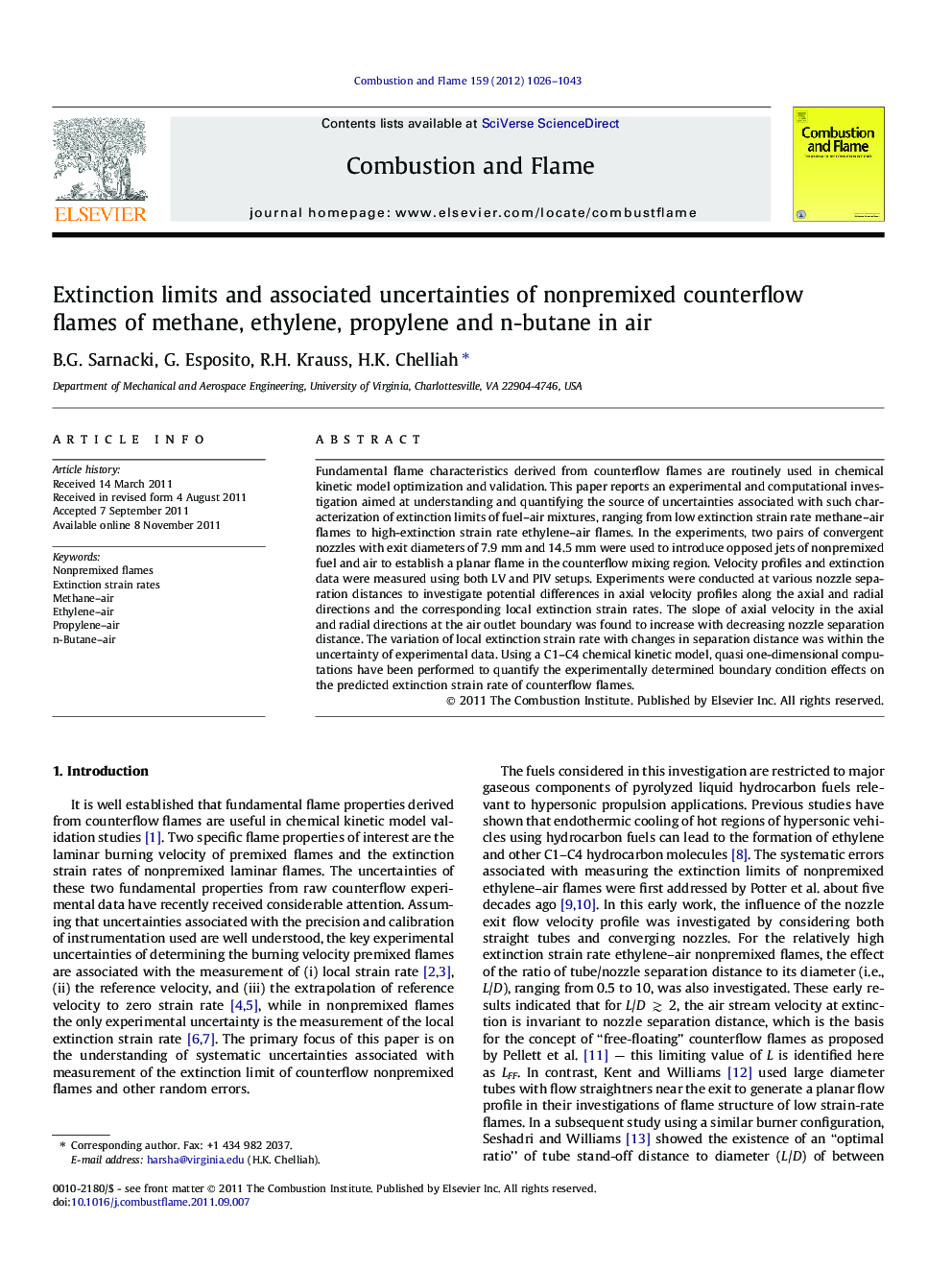| Article ID | Journal | Published Year | Pages | File Type |
|---|---|---|---|---|
| 169041 | Combustion and Flame | 2012 | 18 Pages |
Fundamental flame characteristics derived from counterflow flames are routinely used in chemical kinetic model optimization and validation. This paper reports an experimental and computational investigation aimed at understanding and quantifying the source of uncertainties associated with such characterization of extinction limits of fuel–air mixtures, ranging from low extinction strain rate methane–air flames to high-extinction strain rate ethylene–air flames. In the experiments, two pairs of convergent nozzles with exit diameters of 7.9 mm and 14.5 mm were used to introduce opposed jets of nonpremixed fuel and air to establish a planar flame in the counterflow mixing region. Velocity profiles and extinction data were measured using both LV and PIV setups. Experiments were conducted at various nozzle separation distances to investigate potential differences in axial velocity profiles along the axial and radial directions and the corresponding local extinction strain rates. The slope of axial velocity in the axial and radial directions at the air outlet boundary was found to increase with decreasing nozzle separation distance. The variation of local extinction strain rate with changes in separation distance was within the uncertainty of experimental data. Using a C1–C4 chemical kinetic model, quasi one-dimensional computations have been performed to quantify the experimentally determined boundary condition effects on the predicted extinction strain rate of counterflow flames.
